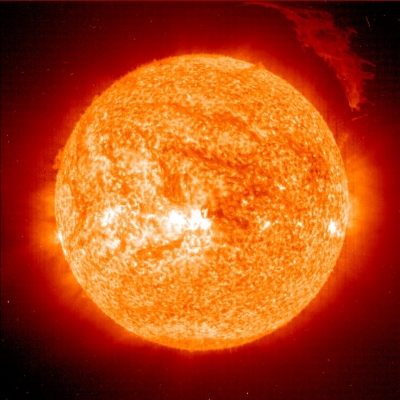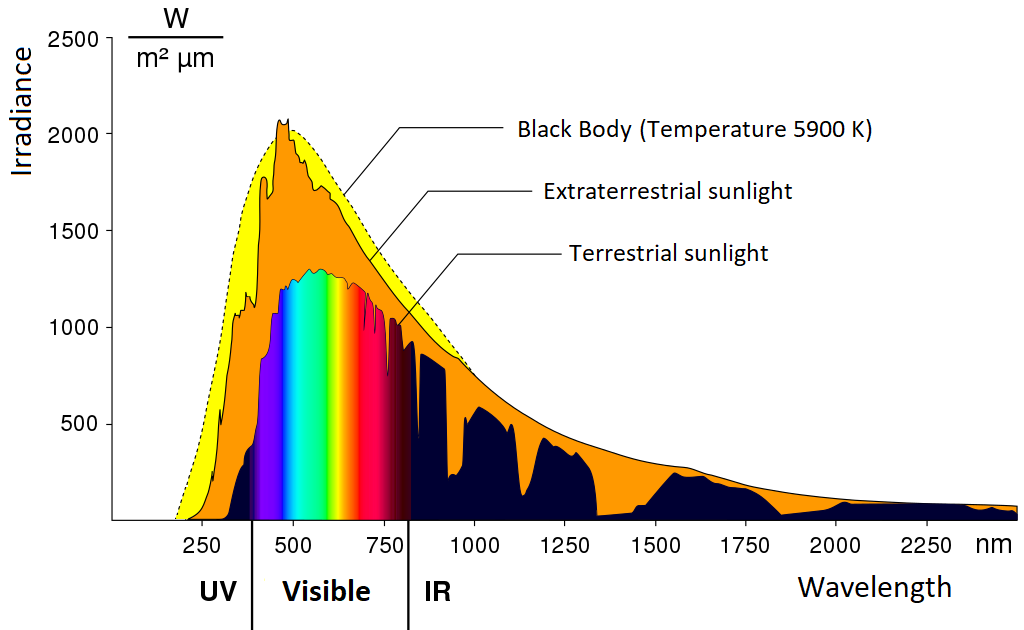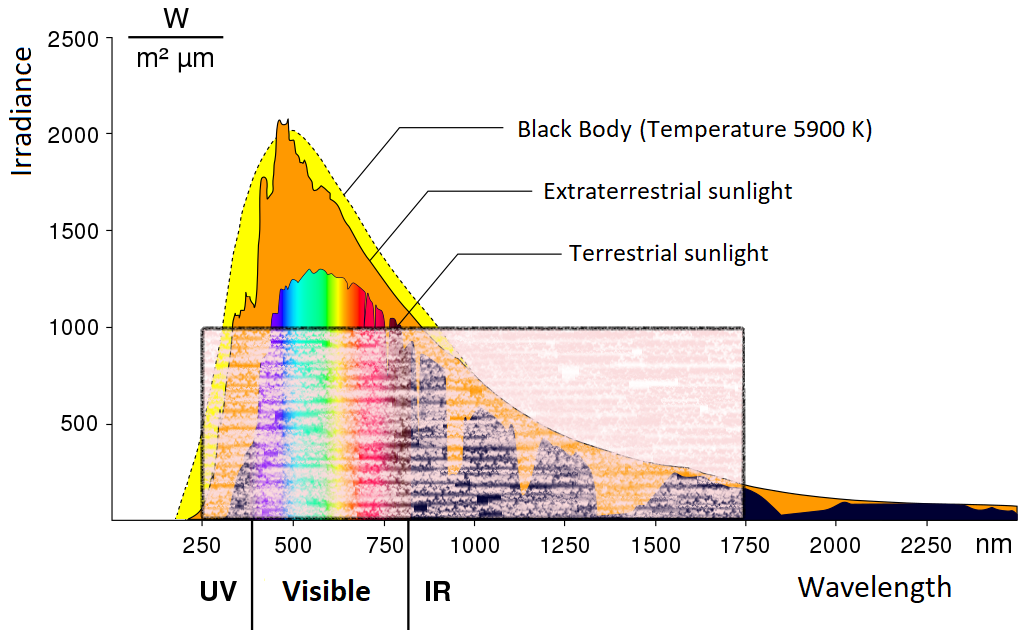3. المناخ وتغير المناخ
Solar radiation (1/4)
The size and mass of the sun
Some properties of the sun become obvious when you compare it to the earth:
- the mass of the sun has the value 2·1030 kg and thus exceeds the mass of the earth by a factor of 333 thousand times.
- its radius is about 700,000 km and is about 110 times larger than the radius of the earth.
- the mean density of solar matter is 1400 kg/m³, but the mean density of the earth is 5500 kg/m³, the earth is much denser, due to its iron core.
However, because of its much larger total mass and the larger pressures inside, the density and temperature at the centre of the sun can become so high that atomic nuclei merge with one another: nuclear fusion takes place. The energy released by this fusion is electromagnetic radiation and reaches the surface of the sun via turbulence and convection, which itself has a temperature of about 5900 K (or about 5600°C).
The radiation spectrum
At the surface of the sun, visible radiation is emitted, and it is aptly named the photosphere. The spectrum comes very close to that of a 5900 K hot black body. Deviations from Planck's law of radiation can be explained by the patchy or spotted structure of the radiating layers, with their temperature and spectral transparency varying with intensity from different locations.

Source: ESA
The following figure shows three spectra:
- the spectrum of a black body with a temperature of 5900 K, which is similar to the solar spectrum,
- the actual spectrum of the sun at the outer edge of the earth's atmosphere (extraterrestrial solar radiation), i.e. without the influence of absorption or scattering by the air, and
- the spectrum at sea level (terrestrial solar radiation) after it has passed through the atmosphere and has been weakened.

Spectral irradiances of a black body with the temperature 5900 K (yellow), the solar radiation at the outer edge of the earth's atmosphere (extraterrestrial sunlight, orange) and at sea level (terrestrial sunlight, rainbow-coloured). The spectral irradiance is the power in watts of radiation incident on one square metre of surface area. The surface is defined to be fixed perpendicular to the sun. The terrestrial sunlight spectrum corresponds to a cloudless day, the sun is at an angle of 48.19° towards the zenith and blue sky radiation is ignored. References to much more precise reference spectra can be found on the Links page.
Source: Wikipedia, edited.
The earth's orbit around the sun is not circular, but elliptical. Hence, the incoming radiation changes over the course of the year by about 6.5%. The mean value across the year is sufficient for our investigation. An exact determination of the mean radiation power from satellite data at the outer edge of the earth's atmosphere across all wavelengths results in 1361 W/m². This value is called the solar constant (although it is not a physical constant). It marks the entry of solar energy into our atmosphere and plays a major role in our weather and climate.
Summed up over all wavelengths, the radiative power above the earth's atmosphere is 1361 W/m². This is the solar constant.

